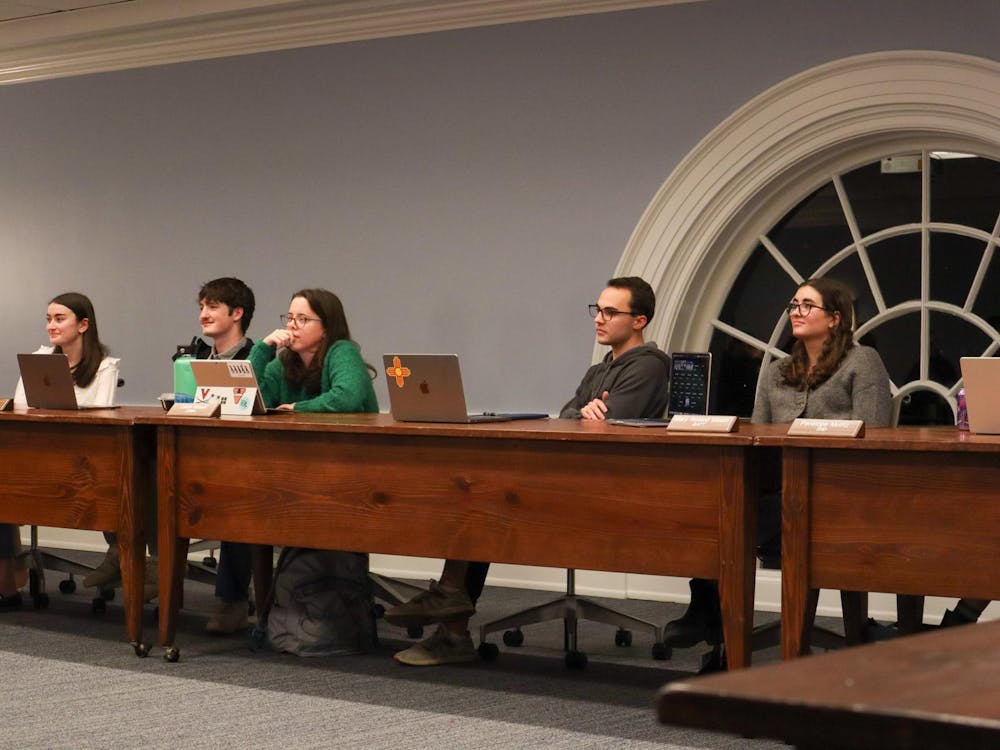The Blue Ridge Center hosted Ed Whelan, Antonin Scalia chair in constitutional studies, to present on how federal judges get appointed. The Blue Ridge Center is an initiative started three years ago at the University that aims to identify topics, viewpoints and theories that students are not learning about in their college classes. The event, hosted Monday evening, was co-sponsored by the Phi Alpha Delta Pre-Law Fraternity and the Virginia Undergraduate Law Review.
Whelan spoke to students on the process of federal judge confirmation, the evolution of federal judge appointments over the last 30 years, the rise in polarization characterizing the system and the importance of forming connections across party lines.
He broke down both the path through which lawyers become federal judges and how presidents go about making their selections. Whelan said that the appointment process for federal judge roles is derived from the Constitution, and he said that at its core, appointment involves a nomination from the president, Senate consent via a confirmation vote and the president’s final appointment to office. Appointed judges are then given life appointements so long as they remain in good behavior and are not impeached.
Whelan ran through the terms of art in the confirmation process. These include the blue slip, in which a home state senator is asked to approve a federal nomination through a traditionally blue letter which acts as an effective veto power, cloture and filibuster,.
“Cloture is a fancy way of saying, okay, we agree that debate is pretty much over … Think of it as closing, and there are hours of post-closure debate … It means there'll be a vote on the merits of legislation or nomination coming soon,” Whelan said.
Whelan said the process of appointing federal judges has drastically changed over the past 30 years. He compared the nearly unanimous appointments of Ruth Bader Ginsburg and Stephen Breyer in 1993 and 1994 to the more controversial appointments of Sonia Sotomayor and Elena Kagan in 2009 and 2010 to model the increasing partisanship that has come to dictate the process.
According to Whelan, in the case of the earlier appointments, the Republicans had deference to the Democratic president. By the latter appointments he presented, this deference had dissolved as senators began to vote on party lines.
“[There was] the notion that we're not going to challenge the … president’s picks on grounds of judicial philosophy. We will defer if this person seems to be a good character and seems otherwise capable — that was the model that dominated back then,” Whelan said. “By the time we get to 2009-2010, there's this dramatic shift [that] you're now fighting on grounds of judicial philosophy.”
Whelan attributed the change in perspective in part due to a conservative legal movement in 2005 to no longer trust the president’s appointments in the way of George W. Bush’s failed appointment of Harriet Miers, Bush’s former lawyer who had no experience serving as a judge. This event, in conjunction with former U.S. Attorney General Merrick Garland’s failed appointment, ultimately fed into the process becoming more majoritarian.
With this shift in perspective within the Senate, the filibuster was abolished for federal executive branch and judicial appointments other than the Supreme Court November 2013, and cloture was moved down to only requiring a simple majority to no longer tolerate parties fighting against each other’s appointees.
Second-year College student Ryan Jones and second-year College student Zoe Timperman both attended the event at the recommendation of their commercial law course professor, who offers students extra credit for attending Blue Ridge Center speaker events relating to the law.
Jones said that going into the event, she had no prior knowledge of the federal judge appointment process. Timperman said she plans to apply to Batten, and she thought this talk would make her more knowledgeable about careers she may pursue post graduation.
“I feel like this will be a good experience for me to understand how people might get jobs as lawyers or judges,” Timperman said.
Jones also said this event helped illuminate options for her career after graduation.
“I'm hoping to go to law school, so I'm really excited to see the different opportunities after that isn't just a lawyer,” Jones said. “[Becoming a judge] seems like a long process, but I’m curious about it.”
For those aspiring to be federal judges themselves, Whelan recommended making friends across party lines because the power of an endorsement from the other side allows for one to secure the proper number of votes to receive an appointment.
“I would say you should develop friendships across the aisle,” Whelan said. “I hope … that you can cherish good qualities in each other, even as you have disagreements on important things.”
Some of the Center’s upcoming events include presentations about technology and antitrust law with Economics Prof. Ken Elzinga, criminal law with U.S. District Court Judge Trevor McFadden and what the Supreme Court gets wrong about rights with Georgetown Law Prof. Randy Barnett.







